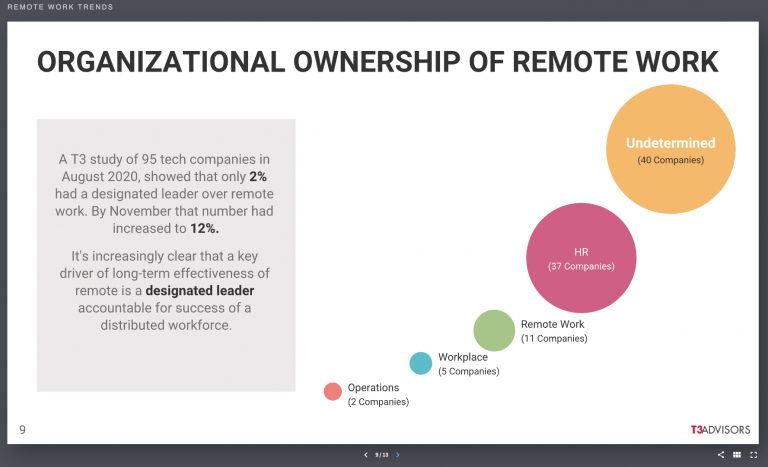The IT investment in Mexico ushered in a new way of doing business that requires new organizational capabilities and new structures to support them. Organizations even started hiring for new roles, such as Head of Remote, to manage remote and hybrid workforce engagements.

As the workforce went remote overnight and IT skills became more sought-after,IT investment in Mexico via venture capital and private equity firms built or added companies to support their portfolio in these trends.
On-demand workforce platforms that could also manage international payroll became part of the new formula, as new talent pools became accessible under the new normal.
These platforms for international workforce management services (IWMS) also help startups extend their runway by providing access to talent in more cost-competitive locations. Incubators and business accelerators needed them, so venture capital firms were quick to make them available to the other companies in their portfolio.
Some IWMS providers were purposefully created for this reason, as other startups were struggling to bring overseas contractors and remote employees to US soil, particularly during the Trump administration’s H-1B visa crackdown.
In the summer alone, more than a dozen IWMS providers announced funding rounds of US$35 million on average (TechCrunch). Investors were rushing to own a piece of the pie, seeing how companies in the US could start to benefit from these types of services. At one point, the venture capital firm M12 had close to 1,000 open remote IT positions for the companies in its portfolio, showing how critical it had become to extend its high-skilled workforce in other talent pools.
Initially, these offered only a global payroll employer organization (PEO) platform. However, as vaccination rates increase and restrictions lessen over the course of 2021, they’ll need a far more comprehensive solution to stay relevant in the market.
The world is slowly shifting to the next normal with a hybrid workforce model in mind, allowing for face-to-face meetings, continued remote working practices, and more cost-competitive rates. More and more companies will distribute their operations based on geographies. North American organizations, for example, will look to establish themselves in Canada, the USA, and Mexico.
A recent study by Mckinsey on reimagining the post-pandemic workforce states that the experience of a hybrid virtual team in the same time zone varies significantly from a hybrid virtual team with members in multiple time zones. Among other issues, unmanaged time-zone differences make sequencing workflows more difficult. When people work in different time zones, the default tends toward asynchronous communications (email) and a loss of real-time connectivity. Asking or expecting team members to wake up early or stay up late for team meetings is equally dysfunctional. The study found that this can work for a short period of time, but in the medium and long run, it reduces the cohesion that develops through real-time collaboration.
Moreover, if there is a smaller subgroup on the team in, say, Asia, while the rest are in America, a two-culture problem can emerge. It is better to build teams that share workday hours to ensure time for collaboration and take advantage of proximity by being able to fly in on the same day for meetings with customers or for culture development activities. Geographical hubs will become more relevant.
So How Does This Impact Private Equity Firms and their It investments?
It’s important to recognize the role that private equity firms can play during these times, as they have the ability to take positions in out-of-favor companies and sectors, guide portfolio company management, and help them grow their businesses.
Deloitte’s Opportunities for P.E. post-Covid-19 mentions that firms are creating dedicated teams for specific goals, but not all funds are prepared to do all these things, and still more may not have the in-house capabilities to anticipate special issues. But if there’s an opportunity out there, private equity firms are likely working around the clock to discover it.

Along the same lines, the recent E&Y 2021 Global Private Equity Survey states that 80% of PE firms of all sizes expect at least a moderate change required for future operating models, so it should be interesting to watch how they add new capabilities while staying agile—PE firms are actually showing more comfort with outsourcing the traditional and more routine back-office functions to address this.
The study also found that as private equity managers continue to grapple with fee pressures and increased competition, the option of using outsourced providers for front-office functions might also be an area of opportunity for savings.
As more and more venture capitals and startup incubators require IWMS providers, we expect to see an acceleration of PE firms acquiring a specialized firm for their own portfolio or putting strategic partnerships in place with those that have the full suite of services in their targeted region. Those with economies of scale that they can benefit from, similar to using a Subsidiary as a Service, will be favored.
With an expert IWMS provider in their arsenal, PE firms will be able to have local recruitment expertise, hire contractors and employees under local laws, use their shared infrastructure and administrative teams, and will have access to their local networks. They will not have additional fixed costs while managing their portfolio—it’s all about securing a profitable exit.
We also see an opportunity for PEs to help every company in their portfolio and increase cost efficiency by moving some talent to the nearshore region. Latin America, in particular, shares similar time zones to the US, with an endless supply of well-educated, English-speaking talent in countries like Mexico. There’s also a strong cultural alignment with the United States, especially in technology startups, which are heavily influenced by tech giants in Silicon Valley.
Subsidiary as a Service and how it protects IT investments in Mexico
IWMS providers that offer Subsidiary-as-a-Service (SUBaaS) could be a good option for PE firms that need nearshore presence, as they provide on-demand, scalable operations with ready to use capabilities. SUBaaS providers are specialized by industry and include all the necessary infrastructure and specialized personnel. In North America, it is more common to find SUBaas for the Manufacturing Industry, but you can find those that are specialized in the Enterprise Software Ecosystem. SUBaaS can dramatically accelerate the entrance of startups into new markets and improve their valuation, both huge benefits for private equity firms. Software Vendors like Microsoft already have a Geo Expansion Program for their Partners so they can scale more easily.
For private equity firms’ portfolio companies, improving technology will not be enough. Small and medium-sized enterprises will need cross-border operations, as their workforce will be spread in geographical hubs. Partnering or acquiring Local Operation Experts in their industry will help to shorten the learning curve and will shape their hybrid workforce strategy.



